Thirty-seven Days in the Metroplex
By now many of you have heard the story of the recent Mountain Lion sightings in and around the DFW Metroplex. These encounters represent the first officially confirmed Mountain Lions sighting in Dallas, Collin, and Hunt County in the modern era. It’s been decades—maybe even a century or more—since Mountain Lions have been reliably documented in these counties.
Most people in Dallas/Fort Worth first became aware of the lion in late November after the big cat was recorded by a trail camera as it passed through Rowlett, Texas—a suburb of Dallas. Video footage of the rare and unusual sighting quickly became big news and garnered attention all across the country.
A few weeks later the big cat was spotted again. This time in Princeton, Texas, twenty miles to the north of the Rowlett sighting. Once again the Mountain Lion was imaged by a trail camera. The recorded photographs allowed the Texas Parks and Wildlife Department to confirm this observations as well.
Tragically, just six days later a Mountain Lion was shot and killed near the small town of Celeste, Texas, just a little further to the northeast of Princeton. In all likelihood, all three of these cases involved the same animal. Until proven otherwise, that will be our assumption. Unfortunately, the North Texas Mountain Lion is now dead.
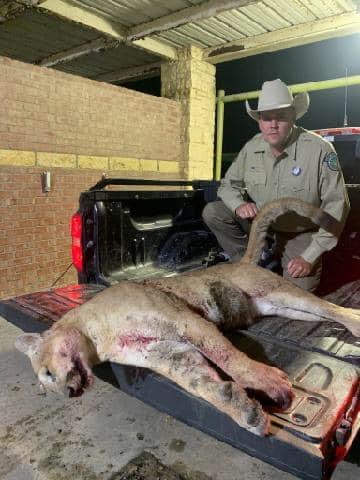
In this article I’m going to tell the intrepid cat’s story in a little more detail, tracing his route through the Metroplex and surrounding area in as much detail as I can. Some of the sightings I will report have been confirmed, and some of them have not. Each case will be clearly indicated.
I’m also going to offer some commentary on how the cat might have found his way into North Texas and why he only survived such a short time. I’m going to discuss the politics surrounding Mountain Lions living in this part of the state. Finally, I’m going to address the way we responded to the news of the big cat’s death.
A Mountain Lion in North Texas?
A Mountain Lion in North Texas is an extremely rare event. In spite of what you are likely to hear casually, there is absolutely no evidence that there is a resident population of Mountain Lions living in or around Dallas/ Fort Worth. This is very important to understand. Clarity is critical with this, because it is the only way a reasoned position about Mountain Lions in North Texas can be developed.
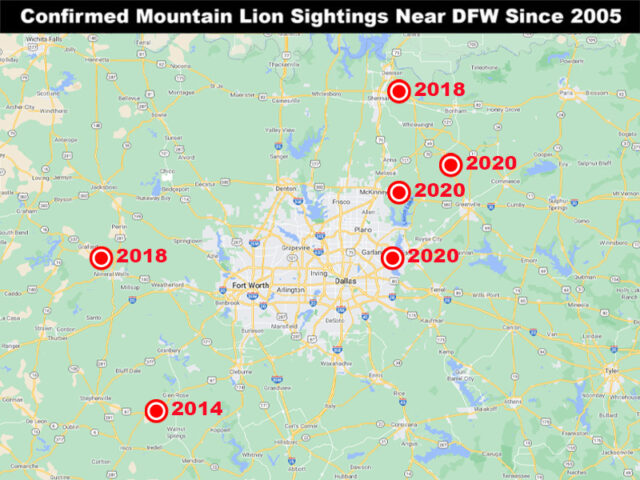
The 2018 Mineral Wells lion was killed by a collision with a car.
There is very little information available about the 2018 sighting near Sherman, TX.
The 2014 cat was killed by a hunter near Glen Rose
In the anomalous case when a Mountain Lion does find its way into the Metroplex, it must be considered transient. What this means is that the big cat is only passing through… It will only be in the immediate DFW area for a short time.

Click to Enlarge.
Mountain Lions in Texas are resident only in far West Texas and parts of South Texas—The Trans-Pecos and along the Rio Grande in some places. Occasionally, when a young male Mountain Lion comes into conflict with an older male, the juvenile will range into other parts of the state in search of territory of its own.
To date, this exercise appears to be fruitless. The journey through Texas is fraught with perils for a transient Mountain Lion seeking to establish a territory in a new part of the state. Most, if not all, young cats that have made the attempt end up as either roadkill or harvested by a hunter.
ARTICLE: Are there Mountain Lions in the Dallas/Fort Worth Area?
THE North Texas Mountain Lion
It’s not clear just how our North Texas Mountain Lion found his way into the Metroplex. The earliest possible (but still unconfirmed) sighting puts the big cat in Celeste, Texas in on November 7, 2020. Another unconfirmed sighting was reported near Weston, Texas on November 12, 2020. The next time the lion was seen was in Rowlett, Texas on the night of November 22, 2020. This was the first confirmed sighting, and the one most of you are probably familiar with.
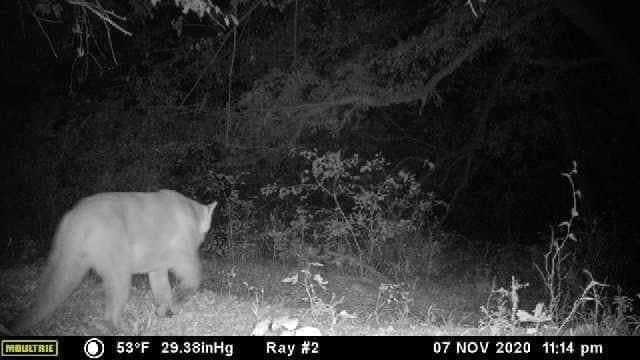
Celeste, Texas recorded on November 7, 2020

Weston, Texas recorded on November 12, 2020
ARTICLE: Rowlett Mountain Lion Confirmed!
A few days later, the Mountain Lion was photographed in Princeton, Texas (December 7, 2020). This time the cat was recorded by a trail camera on private property. Reportedly, there was some evidence of a recent White-tailed Deer kill in close proximity.
REPORT: Texas Parks And Wildlife Confirms Another Mountain Lion Sighting In North Texas
Finally, as you all know, the Mountain Lion was killed on December 13, 2020 by a deer hunter near Celeste, Texas. The big cat had wandered in front of the hunter’s position and was shot. The shooter reported the Mountain Lion to the Hunt County Game Warden who verified that the hunter was properly licensed, and that it was legal for him to have killed the cat.
ARTICLE: Man kills ‘massive’ mountain lion while deer hunting near Celeste
The Mountain Lion was determined to be a adult male around 160 pounds and over six feet in length. Estimated to be approximately six years of age by TPWD, the big cat had likely been wandering the state for some time before he found his way into the Metroplex. And for the short while he was here in North Texas he continued to stay on the move and he covered a lot of ground.

inside of an area of approximately 535 square miles
It’s now been over four weeks since the last confirmed sighting—a fact that reinforces the idea that there was only just the one big cat. Unfortunately, the tragic outcome of his death was probably inevitable. The story of the 2020 North Texas Mountain Lion illustrates well the reasons why we don’t ordinarily have lions in this part of the state. There are simply too many encumbrances to their ability to survive. Most all Mountain Lions that roam out of far west Texas end up like this one did.
Can Mountain Lions and People Coexist in North Texas?
We were all rooting for this lion to find some way to survive here in DFW, but the odds were decidedly against him. While he was roaming through the densely populated Dallas suburb of Rowlett, the concern was that he would be hit by a car. When the Mountain Lion later turned up in a more rural area in Collin County, we all breathed sigh of relief… that is until we realized it was deer hunting season and the big cat was sure to be spotted by a hunter.
My hope is that the tragic story of the 2020 Mountain Lion—while terribly disappointing—will ultimately be educational and enlightening. For instance, one thing that has become abundantly clear is that when there really is a Mountain Lion in the Metroplex it will be seen, and it will be photographed. The presence of a Mountain Lion in North Texas can be positively confirmed with real evidence. We do not have to rely of hearsay and rumor.
The flip side of this is that actually having a Mountain Lion temporarily in the Metroplex also reinforces the idea that they are NOT here ordinarily. There are simply too many people, with too many cameras, for there not to be an abundance of evidence if we really did have a population of resident big cats living in this part of the state. When a Mountain Lion is here, it WILL be seen and REAL evidence will be discovered.
Now that we have momentarily had the first confirmed Mountain Lion in the DFW metroplex in decades, maybe it would be prudent to take some time to consider what it might be like if they really were here all of the time. Is that something we would want? What types of problems might that cause? Can Mountain Lions and people successfully coexist in a place like Dallas/Fort Worth?
ARTICLE: Suburban Stalkers: The Near-Wild Lions in Our Midst
These are difficult questions, and the answers are not clear. Maybe it’s not a good idea to facilitate Mountain Lions returning to North Texas. If so, very little needs to change. But if we were to decide in the affirmative, then the first thing to update is the legal status of these cats in the State of Texas. The law as it is currently written allows for the killing of Mountain Lions on private property, by any lawful method, at any time. A hunting license is required, but Mountain Lions are considered a non-game species, so there are no additional restrictions in place. There is no closed season, no bag limits and no possession limits. The age of the animal is not considered. It is just as legal to kill kittens as it is to kill adults.
What this means in practice is that one guy with a gun can decide for all of of us whether there will be Mountain Lions in North Texas or not. There seems to be something a little out of balance about this equation. Maybe some of you would like to have a say in the matter as well. It might be time to reconsider the status of these big cats—at least in certain parts of Texas.
One possibility could be to simply put some restrictions on the killing of Mountain Lions in counties that do not have a documented resident breeding population. Requiring a permit to be applied for before a Mountain Lion could be killed in one of these counties would allow time for more people to be involved in decisions about how to deal with situations involving Mountain Lions in new areas of the state.
If there is to be a change in the way Mountain Lions are considered by the State, citizen advocates will likely have to do the majority of the legwork. I do believe our politicians will be receptive to considering the issue, but I don’t expect that they will take the initiative on their own.
Creating a workable plan of action would be a good place to start. Advocates will need to develop a complete understanding of the relevant issues, and produce a realistic plan for managing what we would like to see changed. There has to be a real effort to control misinformation.
TPWD could help by conducting a comprehensive statewide study of Mountain Lions in Texas, complete with a reliable county by county population estimates. Only TPWD can do this effectively, and they should engage. Information collected about these big cats needs to be consolidated and made readily available on the TPWD website for anyone who is interested. Statistics should be updated regularly.
I’m not sure why TPWD hasn’t already done something like this. Surely there is someone within the organization who has the requisite level of curiosity and interest to pursue a project of this type. Ultimately, TPWD may need a little encouragement from the public to overcome its own inertia.
The Response
There was a lot of outrage expressed by people all across the Metroplex when news of the Mountain Lion’s death got out. The need to vent frustration and disappointment was certainly understandable, but in many cases I was disturbed by the way some Mountain Lion advocates responded to the situation on social media. There was entirely too much moralizing and hateful vitriol. Add to that long rambling diatribes, rumor mongering, false assertions, instances of doxing, and an abundance of uninformed—but authoritative—opining.
I don’t believe there is much positive to be gained by such behavior. If you are not an expert on Mountain Lions and their habits, now is the time to listen, not to talk. We all need to make a real effort to learn more about these big cats. Studying places around the country where big cats already live in close proximity to people surely would be of great benefit. Read a book. Read an article. Watch a documentary. Learn, don’t just “know.” Be skeptical and try to recognize the difference between hearsay, rumor, and reliable information. Be on guard against agenda-based exaggerations—from all sides of the issue.
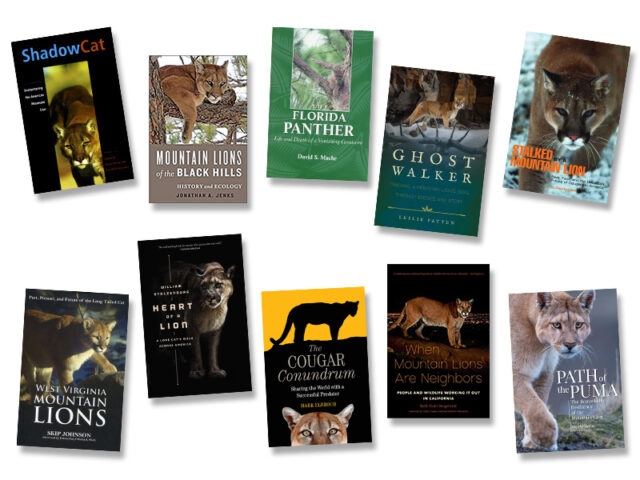
All are available on Amazon
There is something special about Mountain Lions, that much is certain. People are fascinated by them. Most people would like to have an opportunity to see one. But claiming to have seen a Mountain Lion in and around DFW without supporting evidence is generally a valueless thing to do. All it really accomplishes is to muddy the water and further confuse people. The same is true for all other false or uninformed claims made about these big cats.
What is needed is a well reasoned response that includes taking stock of the situation by considering the issue realistically and from all sides. We need to decide on and document a reasonable proposal based on the best information available. Support for the approach needs to be garnered and organized. The plan then could be taken to lawmakers who could help push to make a change. The answer to this issue is within reach as long as advocates don’t discredit themselves right out of the gate.
The story of the first Mountain Lion found in these parts in many decades has come to an all too soon end. No one can say for sure how long it will be before another big cat will make the long, arduous journey into North Texas. We can only hope that by then there will have been time to make the changes necessary to facilitate a better outcome. If the right solutions are put forward and the appropriate actions taken, maybe the travels of next Mountain Lion will not have to come to such an abrupt and tragic conclusion.



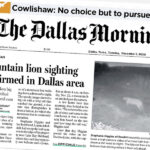
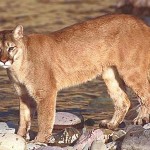


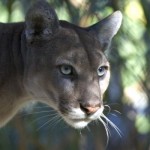
I’m curious about your assumption that this is one individual, “until proven otherwise”
It seems to be equally viable to take the opposite stance.
Are you relying only on the relative rarity of confirmed sightings? Or is there some other reason that you think it more likely 1 than several?
EDITOR’S NOTE: We have gone decades without a confirmed Mountain Lion sighting in the metroplex… maybe even a century or more. When all of the sudden you get multiple confirmed sightings within just a few days of each other—all in the same general area—that implies strongly that they are all the same animal. This position is reinforced by noting that new sightings stopped after the Mountain Lion was killed in Celeste. If a new sighting is reported and confirmed in the next few months, then there would be room to reconsider.
Chris, thank you for your very thoughtful and insightful analysis of the situation. One more thought: The experience of other metropolitan areas that do have lion populations would likely contribute significantly. The best known of those are Los Angeles, CA and Boulder, CO. In both, interactions of people and lions have often resulted in undesirable outcomes for both.
Here in the Inland Northwest we also have lions, but they are almost never reported in urban or even suburban settings, though they do show up in exurban locations. The outcome when lions and people do interact here is often less than beneficial to the lion, just as in other, better known metropolitan areas.
Perhaps some changes in lion management are appropriate in Texas. It is probable that TPWD considers the lion population where they do occur to be stable, and that no changes are warranted. Seldom do we hear of lion predation on livestock in those areas, though sheep are common, and I do not recall an instance of a lion attacking a person in Texas. But that might not remain the case were lions to become established in more populated parts of the state.
EDITOR’S NOTE: Hi David. Yes, I agree that areas where people and Mountain Lions live in close proximity with each other should be considered carefully. Several of the books I suggested are focused on places like urban California and Florida. I had intended to communicate that better than I did… I will make updates to clarify.
As much as I would like to believe otherwise, it is difficult for me to imagine a scenario where Mountain Lions living in the more populated parts of the state wouldn’t lead to frequent conflict. More to learn!
I have heard about these sightings and never thought I would ever see one, but tonight I just saw a mountain lion in North Frisco, TX it ran across the highway 289(Preston Rd.) maybe 20 or 30 yards in front of me into a wooded area, near where a new development of a college is taking place near highway 380. (time of sighting is 11:00 Pm Monday March 15th 2021) I would not have believed there would ever be one but seeing this made me a believer, their must be breeding going on and there must be male and female lions mating in the area, these animals need to be caught and removed from the area before they breed more, small pets and maybe even children are in danger, I personally don’t believe we can live with animals this large in the suburbs, also just near us are many farms with small animals that are in danger, this must be dealt with !
The article link you posted above to Suburban Stalkers: The Near-Wild Lions in Our Midst is an excellent read. As a Native Texan, I feel folks in Texas seem to fall behind states like California in protecting wildlife. If Texas would learn from states like California, and their study of wildlife coexistence with humans, perhaps we could better educate our communities to respect nature and not shoot to kill each time a bobcat, coyote or cougar is encountered. However, it just seems to be part of our biological landscape as Texans. In our Collin County neighborhood, there are daily posts alerting “danger” for bobcat and coyote sightings, when there are no attacks that have occurred. I simply do not understand the fearmongering and believe it is unwarranted due to lack of education.
Although we rarely see cougars, they are certainly annual visitors to the Aledo area west of Fort Worth.
No other animal steals a full body goat, consumes part, hides and covers the remaining carcass under brush , then returns over the next few days to finish it. Tracks are plain if it’s rained.
I’ve lost goats to coyotes as well, but coyotes spread the goat all over, and finish it in one sitting.
December through March seem to be prime time for my visitors, and notwithstanding the huge cost increases for goats, I am pleased to have them while I can.
Dallas tx has a mountain lion population and know this for a fact. When the books and documentaries describe these cats as being stealth they are not joking. I can prove at least three full grown cats live in my neighborhood. I’m going to buy a trail camera and prove it. These are not just passing through they live here at least since the big freeze when i first saw foot prints in the snow in my back yard.
Hunt County, Tx has a mountain lion population. I not only have seen a huge one in the Sabine River bottom back in Sept, 2002 but my brother saw one while on a house build near Hidden Valley Estates just out of Lone Oak. A brush clearing crew working on a Gas line ROW near here on Sabine also saw a large mountain lion. I have a trail cam pic or 2, have seen their tracks and heard their screams numerous times, and found their deer, pig, livestock kills. I saw one near my game feeder as I approached to service and refill it on Dec, 2020. Again on the Sabine River in Hunt Co. I have been an outdoorsman, hunter, trapper, fisherman for over 50 yrs and YES, they are here in N.E. Texas. They are not all transient animals. Most city folk would not believe the wildlife that are living down in these semi remote areas of this part of the country. Don’t ask me about all of them as some I do not care to see again.
I’ve had 3 friends tell me they’ve seen one in the lake worth area and around the trails in Sansom park. One of my friends is an old cowboy from west Texas and said “i know the difference between a lion and a Bob cat and i saw a lion the other morning” 820 and las Vegas trail area. Another friend was hiking at inspiration point in Sansom park and saw a large cat with a tail, hence not a bob cat. These sightings are within a mile or so from each other. I started asking around and a few other people have seen the lion at inspiration point while hiking. There’s a bunch of deer around that lake. So when i hear from people that know what a lion looks like, it’s a lion. Someone should put out trail cams around inspiration point/lake worth… Guarantee There’s a lion out there, especially when my friend from west Texas saw it and his neighbor another old cowboy saw it a few days before.
Hmmm… . All these claims sound plausible to those who are unfamiliar with evidence based wildlife observation. Anyone so certain and wishing to convince others should do two things: 1. Put out trail cameras where you believe the lion(s) are. 2. Convince TPWD to investigate. They have capable wildlife biologists who do this for a living, and have certain knowledge of mountain lion behavior.
For what it’s worth, Chris has investigated intensively claimed mountain lion sightings, and was able to discredit every one until this particular cat showed up.
I too have seen quite a few mountain lions, all located in Collin County. Anyone who does not think that there are more lions out there just has not spent enough time night hunting as I do. Some of my sightings have been from 50 feet … hard to mistake a mountain lion from 50 feet away. Especially that long sweeping tail they have. My most recent sighting was June 06, 2022 in Collin County. I viewed the lion with a thermal scope at about 11:30pm. Again, that 3 foot long sweeping tail that gives a hot thermal signature is impossible to miss. No other animal around here has that thermal signature that I am aware of. I spend a tremendous amount of time in that part of the county at night with night vision and thermal scopes and see on average one lion about every three years.
Mountain lions roaming around DFW seems great until pets and children start becoming dinner for those cats. Great way to get everyone to never enjoy the outdoors. I think that this is a terrible idea.
I saw a mountain lion in Little Elm near Lewisville lake about 1/2 mile north of the cottonwood marina during the last week of August 2023. I was walking a trail in the woods near the lake, when rounding a curve I saw the lion wandering down the trail away from me. The breeze was blowing in my face so the lion didn’t sense me and I was able to watch it for 10 to 15 seconds. At first glance I thought it was a big dog, but then I realized it was the big cat. I tried to quietly follow but the lion heard me and dived into the woods. I didn’t see it again. Unfortunately I didn’t have my cell phone to get a photo.
“Hey, we never see these around here, let’s kill it!!!” I will never understand the soul and substance of a person who does this…
This happened in Georgetown in Williamson county, back in 2003. I was lucky enough to actually see the mountain lion in my urban neighborhood of Serenada. It traveled pretty far in a short amount of time and ended up in the newly opened Cimarron Hills neighborhood. There were only a handful of houses then with plenty of land with cover for the mountain lion to roam. People freaked out and actually had group hunts to find and kill it, which they succeeded in doing. So sad…it was a beautiful animal.